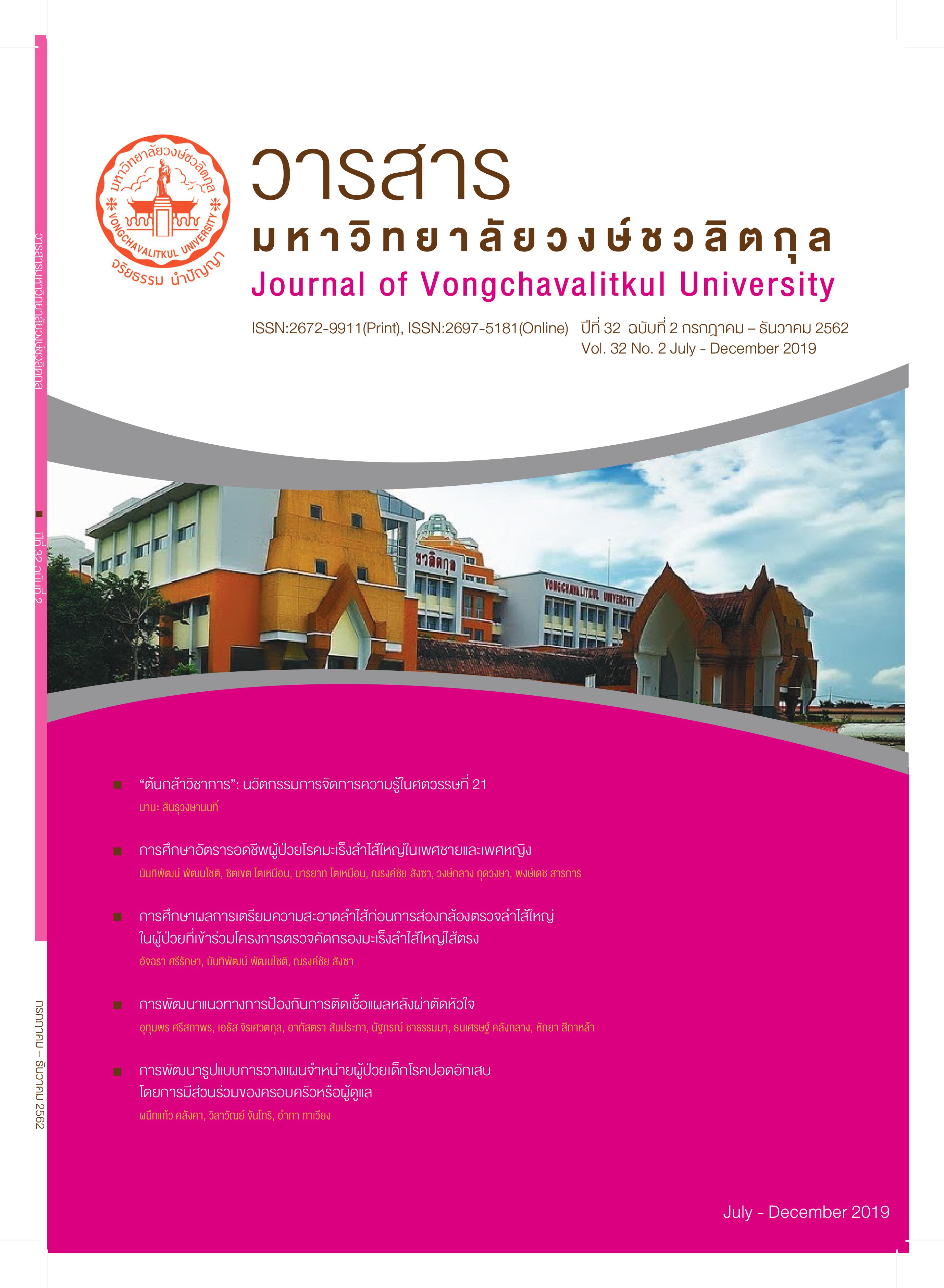The Effects of Acid Rain to the Strength of Reinforcing Steel
Main Article Content
Abstract
The acid rain is a result of the air pollution from the burning of fossil fuels, such as coal, natural gas, and oil, from electricity production and industries. Acid rain is the result of chemical reactions of sulfur dioxide (SO2) or nitrogen dioxides (NO2) with moisture in the air. It is in the form of sulfuric acid (H2SO4) and nitric acid (HNO3). The reinforced concrete and the structure of steel buildings were in the acid rain for long time periods. The buildings may were affected by acid rain to their strength and life of using.
Objective: The objective of this research was to study the effects of acid rain on the maximum tensile strength of reinforcing steels.
Methods: The examples of steels were soaked in nitric acid and sulfuric acid at the concentration of 0.5 percent, 1 percent, 2 percent and 3 percent by moles per volume of solute. The samples were soaked for 15 days, 30 days, 45 days and 60 days. Then the maximum tensile strength and the lost weights of steels were compared.
Results: This study revealed that both the acids types soaking with the increasing of concentrations had a significant effect on the decreasing of the maximum tensile strength of steel. If the concentration of sulfuric acid and nitric acid were the same and the durations of immersion in both acids were equal, the maximum tensile strength of steels soaked in sulfuric acid was decreased significantly compared to those soaked in nitric acid. Comparison of the maximum tensile strength of steel soaked in nitric acid and sulfuric acid at the various immersion periods. This study also indicated that the longer the immersion time of the steel the higher the amount of the decreasing of the maximum tensile strength of steel.
Article Details
References
2. กรมควบคุมมลพิษ. (2559). ฝนกรด. [ออนไลน์] สืบค้น 11 กรกฎาคม 2559, จาก: http://aqmthai.com/
3. มาตรฐานผลิตภัณฑ์อุตสาหกรรม (2559). มาตรฐานผลิตภัณฑ์อุตสาหกรรม เหล็กเส้นเสริมคอนกรีต : เหล็กข้ออ้อย (มอก.24 – 2559). [ออนไลน์] สืบค้น 21 ธันวาคม 2562, จาก: https://www.tisi.go.th
4. Al-Amiery, A. A., Kadhum, A. A. H., Kadihum, A., Mohamad, A. B., How, C. K., and Junaedi, S. (2014). Inhibition of mild steel corrosion in sulfuric acid solution by new Schiff base. Materials, 7, 787–804. doi: 10.3390/ma7020787
5. American Society for Testing and Material. (1995). Annual Book of ASTM Standard 1996 Section 4 Volume 4.01, 4.02, 4.03, and 4.05. Easton, Md., USA. : American Society for Testing and Material.
6. American Society for Testing and Material. (1979). Annual Book of ASTM Standard 1979 part 13, 14 and 41. Easton, Md., USA. : American Society for Testing and Material.
7. Berisha, A., Podvorica, F., Mehmeti, V., Syla, F., and Vataj, D. (2015). Theoretical and experimental studies of the corrosion behavior of some thiazole derivatives toward mild steel in sulfuric acid media. Macedonian Journal of Chemistry and Chemical Engineering, 34, 287–294. doi: 10.20450/mjcce.2015.576
8. Mehmeti, V. V. and Berisha, A. R. (2017) Corrosion Study of Mild Steel in Aqueous Sulfuric Acid Solution Using 4-Methyl-4H-1,2,4-Triazole-3-Thiol and 2-Mercaptonicotinic Acid—An Experimental and Theoretical Study. Frontiers in Chemistry, 5:61. doi: 10.3389/fchem.2017.00061
9. Weathers, K. C. and Likens, G. E. (2006). Acid rain. In: W. N. Rom (Ed.). Environmental and Occupational Medicine (4th ed.). Philadelphia: Lippincott-Raven Publ. pp. 1549–1561.


